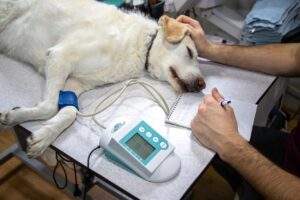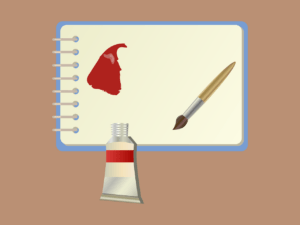Apply These Techniques To Improve Kidney Disease Research With Holistic Health Center
Bumps in the back of the throat might look inflamed and rough. Some individuals call this sign cobblestone throat due to its look. The majority of people with a cobblestone throat have pharyngitis, which triggers the throat to feel inflamed, uncomfortable, and inflamed. Numerous various conditions can trigger pharyngitis, however, it is most frequently due to a viral or bacterial infection, such as influenza or cold.
Causes
- Infections can trigger a cobblestone look at the back of the throat.
- When the body battles an infection or irritant, the lymph nodes and lymph tissue fill with fluid and become swollen.
- Inflamed lymph glands can trigger the cells under the skin to swell and look rough, which physicians call pharyngitis.
- Viral infections trigger 60– 90% of pharyngitis cases. Other infections, such as chickenpox, herpes, croup, and mono, in some cases, trigger swelling and a cobblestone throat.
- Bacterial infections might likewise trigger bumps at the back of the throat. Bacterial infections are more typical in the winter season and early spring.
- Kids and teens might have a greater danger of viral and bacterial throat infections, consisting of those that trigger bumps at the back of the throat.
- In some cases, pharyngitis can be a persistent issue that lasts for weeks or months, triggering the cobblestone look to remain for a very long time.
- When pharyngitis is persistent, it is typically due to the fact that something constantly aggravates the throat, instead of due to the fact that an individual has an infection. Heartburn and allergic reactions Trusted Source is possible offenders.
- Individuals with swelling or swellings at the back of the throat may fret that they have cancer. Cancer does not generally trigger bumps at the back of the throat. Nevertheless, it is essential to speak with a medical professional about any development or swelling that does not disappear.
Signs
In addition to seeing bumps at the back of the throat, an individual might have swelling at the back of the mouth or throat, typically best behind the tonsils.
Some other signs that an individual may experience consist of:
- throat discomfort
- hoarseness
- problem swallowing
- nasal blockage
- fever or other signs of the influenza
- Medical diagnosis
- A medical professional can typically identify the reason for the bumps by taking a look at the throat. Some other tests that might help medical diagnosis consist of:
- a blood test for Epstein-Barr, the infection that triggers mono
- a throat culture to check for Streptococcus germs, which trigger strep throat
- a throat culture to check for less typical infections, such as chlamydia
- A physician might likewise ask concerns about how long the throat has actually ached and whether the individual has a history of allergic reactions or heartburn.
Treatment
- A Holistic Health Center might recommend prescription antibiotics to deal with a bacterial infection.
- The majority of infections that trigger bumps in the back of the throat are viral and will disappear without treatment. The cold and influenza typically take about a week to disappear. Some infections, such as mono, take a lot longer– anywhere from a couple of weeks to a number of months.
- Prescription antibiotics can deal with bacterial infections, however, lots of people with a cobblestone throat do not have a bacterial infection. Taking a lot of prescription antibiotics increases antibiotic resistance, making it less most likely that these medications will operate in individuals who truly require them.
- A 2016 research study of 2,000 individuals looking for treatment for an aching throat discovered that simply 160 (8%) required Alternative Medicine Center.
Natural home remedy
- Numerous natural home remedies can assist alleviate the signs of an aching throat and decrease the swelling and bumps. These treatments consist of:
- Taking over the counter painkiller. Some research study recommends that ibuprofen provides more relief than acetaminophen.
- Drawing on a throat lozenge or hard candy.
- Rinsing with warm seawater.
- Attempting a throat numbing spray. This spray might briefly eliminate burning throat discomfort.
- Utilizing a humidifier. Some individuals discover that humidifiers assist with nighttime coughing due to the fact that they assist fight dryness.
- Consuming honey to decrease coughing and throat pain. In a 2012 research study, kids who got dosages of honey had more substantial enhancements in sleep quality and reduces in coughing than those who utilized a placebo.
- Some individuals utilize organic treatments to assist with signs or to speed recovery. The authors of a 2012 Cochrane evaluation discovered minimal proof to recommend that some Chinese organic mixes might aid with throat discomfort.
- Nevertheless, the proof was of poor quality, so they do not advise any particular Chinese organic treatments for dealing with throat discomfort.
When to see a medical professional
If an individual’s signs worsen over numerous days, they must speak with a doctor. An individual with a cold or another thought infection who establishes bumps at the back of their throat can securely attempt house treatment for a couple of days.
Individuals ought to see a physician if:
- signs worsen over a number of days
- signs do not enhance with house treatment
- a newborn or infant establishes cobblestone throat or a fever
- the discomfort is intolerable
It is essential to go to the emergency clinic if throat discomfort makes breathing extremely hard or if the throat feels as though it is closing. If a child or kid has problem breathing, look for emergency situation care.







